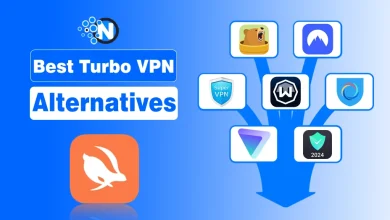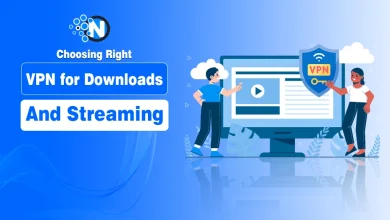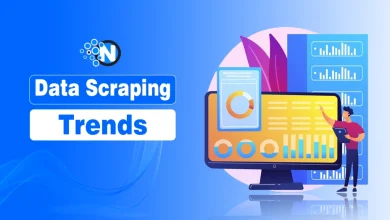The Future of Mobile Connectivity: LTE vs 4G

Have you ever wondered what the terms “LTE” and “4G” really mean for your business?
These technologies are thrown around so often that it’s easy to get them confused. At first glance, they may seem like the same thing, but their differences are significant for businesses seeking technological efficiency and competitiveness.
According to the GSMA, 88% of the world’s population has technological access to 4G, but in reality most users are connected via LTE. LTE is considered the foundation of 4G, but this technology doesn’t always meet fourth generation connectivity standards. This undoubtedly affects download speeds, connection quality and the stability of the mobile network.
So, let’s break it down: Is LTE the same as 4G? Why the difference is this important to your business?
If your business is in the IT or manufacturing sector and you rely on digital technologies, then stable connectivity and high bandwidth make choosing the right mobile network strategically important.
In this blog post, I will look at the key differences between LTE and 4G, how these technologies impact businesses and what you need to choose to ensure sustainable business growth.
Let’s start!
LTE and 4G: Technical Differences and What They Mean
At first glance, there may seem to be little difference between LTE and 4G. However, a closer look reveals that the choice between these technologies affects key aspects of connectivity.
What is LTE?
- LTE (Long-Term Evolution) — this is a data transmission technology originally developed as a transition to 4G. LTE offers higher speeds than 3G, but does not always meet 4G standards. For example, the basic version of LTE offers download speeds of up to 1 Gbps or 100 Mbps. There is also LTE-Advanced technology (sometimes called 4G+), which can reach maximum download speeds of up to 3Gbps.

What is 4G?
- 4G (the fourth generation of mobile communications) is a standardised network with requirements for speed, latency and connection stability. True 4G (sometimes referred to as LTE-Advanced) can achieve download speeds of up to 1Gbps under ideal conditions; in reality, speeds vary depending on many variables and range from 20 Mbps to 100Mbps.

Why is this Important?
LTE may be sufficient for basic business processes such as sending emails or downloading small files. 4G is more suitable for businesses that use cloud applications, video conferencing or IoT devices.
Contradiction:
“Isn’t LTE fast enough?” — Yes, it is sufficient for simple tasks. But if you plan to scale your business or implement advanced technologies, the difference becomes critical.
How LTE and 4G Affect Business Processes
When it comes to business, speed and connection stability are more than just a convenience. They affect productivity, employee response times and customer satisfaction — all of which contribute to business success.
Speed as a Competitive Advantage
4G offers high data transmission speeds, making it an ideal choice for businesses that deal with large volumes of information. For example:
- Cloud services: for uploading and sharing data in real time.
- In education and healthcare: video conferencing, where the absence of delays and dropouts is critical.
- Looking to the near future, fourth generation connectivity will be used in IoT devices that require fast data synchronisation.
Stability — the Foundation for Remote Working
Modern offices are increasingly adopting hybrid or fully remote working formats. Under these conditions, stable connectivity becomes critical. LTE can experience problems during peak hours or in densely populated areas, while 4G can handle loads better.
Concerns:
“What about cost?” — 4G may indeed be more expensive in the short term. However, as UCtel’s customers have found, the investment in infrastructure pays for itself through increased productivity.
How to Choose the Right Technology for your Business
Before making a decision, it’s important to consider not only your current needs, but also your long-term goals.
Step 1: Assess your Network Load
- How many people are using the connection at any one time?
- What applications use the most bandwidth?
- What external factors, such as building density or landscape, could affect the quality of the connection?
These questions will help you determine how important speed and stability are to your business.
Step 2: Plan for the Future
If you’re planning to implement IoT, expand your use of cloud technologies or move towards digital transformation, 4G is the optimal choice. LTE should be considered a temporary solution that will require upgrades in the long term, resulting in additional costs.
Step 3: Consult with Experts
Companies specialising in mobile technologies can audit your current network and offer the most suitable solution to meet your business’s connectivity needs.
The Bottom Line
LTE and 4G are not just buzzwords. They are technologies that determine how efficiently your business can operate in the digital world. While LTE is great for basic tasks, its capabilities may not be enough for growing businesses. 4G offers high speed and stability, which is important for businesses using modern technologies. Choosing the right network not only affects current operations, but also sets a strategic direction for the future.
While the golden age of fifth-generation connectivity (which Ofcom predicts will begin around 2030) is not yet here, you can contact experts in the field to learn more about the possibilities of LTE and 4G for your business. They can help you assess your current needs, test networks and choose the best solution to meet your long-term goals for robust mobile connectivity. Still got questions?
FAQs
Is LTE the same as 4G?
No. The difference in favour of the latter is one generation and an optimistic view of the future. Looking beyond? CNN Business explains the difference between 4G and 5G.
Isn’t it easier to wait for 5G?
4G already meets most needs and the transition to 5G will be easier with a prepared infrastructure. Another common question UCtel consultants are asked:
Isn’t 4G too expensive?
It may be more expensive, but the benefits justify the cost. So the answer to the introductory question,




